Transplant Hydrangeas: [Conditions, Time, Tools and Steps to follow]
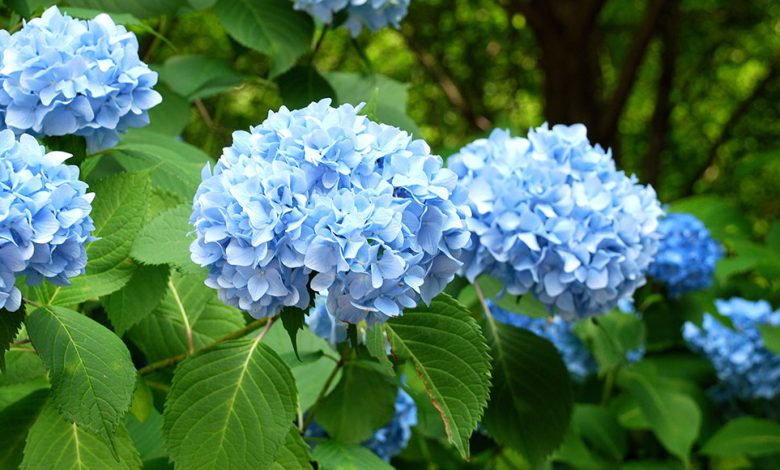
What characterizes hydrangeas?
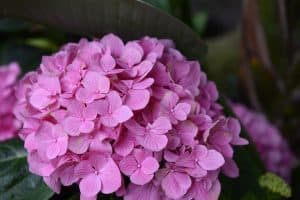 The Hortensia or Hydrangea is an ornamental plant from two continents: America and Asia. It is characterized by the exuberant beauty of its large white, blue or pink flowers.
The Hortensia or Hydrangea is an ornamental plant from two continents: America and Asia. It is characterized by the exuberant beauty of its large white, blue or pink flowers.
In China, Japan and Korea there are splendid varieties with huge flowers that cover bushes that reach a maximum height of approximately 3 meters.
It is very versatile, because there are species that are deciduous, but there are also evergreen, so they never lose their foliage. Currently, more than 100 species have been located throughout the world.
They are very popular because they tend to have a long flowering period, which usually begins in the spring and ends in the fall. They are hardy plants. The Hydrangea has a woody stem, large and very green leaves.
The most popular are deciduous, so it is necessary to understand what care they should receive so that their flowering period is sensational. However, there is also the possibility of multiplying it without great complications, either in the garden, a pot, vases or on the terrace.
What should we take into account when transplanting hydrangeas?
The conditions that every flower lover must meet when growing hydrangeas are the following:
Low soil salinity
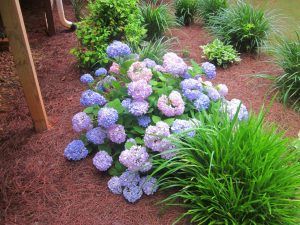 The following keys are vital to growing and maintaining healthy hydrangeas.
The following keys are vital to growing and maintaining healthy hydrangeas.
The first thing will be to verify that the type of soil does not have excess salinity, because this will inevitably make it sick with iron chlorosis that could wither and kill it.
cool temperature
They usually adapt to both interior spaces and sunny places, in gardens, with temperatures above 15ºC. A climate that stays around 20ºC is to its satisfaction, because excessive heat will shorten its life and it will not give flowers.
constant humidity
That is why it is also essential that the plant grows in permanent humidity conditions, but it should never be excessive because the root can rot. Watering is daily when it has flowers, but it should never be exceeded.
Place with good lighting
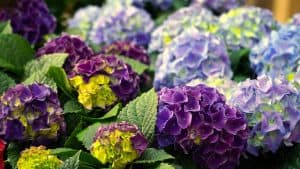 The place where the plant stays, once you adopt it, must always be very well lit. Because otherwise its flowers will turn yellow and wither.
The place where the plant stays, once you adopt it, must always be very well lit. Because otherwise its flowers will turn yellow and wither.
It is preferable outdoors, but at home they really like to be on terraces or balconies.
regular pruning
As it is a plant that grows a lot, you have to have the foresight to always be pruning it to remove dead leaves and stems. This will make it easier to transplant into a larger pot or area where it can grow comfortably.
What is the best time to transplant hydrangeas?
Late spring or early summer is an ideal time to safely repot this perennial, as they will not be damaged by high or sweltering temperatures.
What tools should we use to transplant hydrangeas?
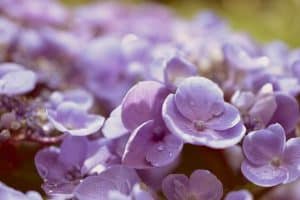 The ideal time to transplant hydrangeas occurs when we see that the stems are budding. Although, in general, the experts appeal to the stems with withered flowers.
The ideal time to transplant hydrangeas occurs when we see that the stems are budding. Although, in general, the experts appeal to the stems with withered flowers.
The main thing: cuttings of hydrangea plants in white, pink and blue flowers, in order to combine them. These shoots with few leaves and no flowers should have an estimated length of about 10 centimeters.
It should be cut in the area of the 4th node of the stem, removing the leaves flush with it and diagonally. A good trick is to cut the leaf in half so that the cutting suffers less water loss and thus promote its healthy development.
Materials
- Work table.
- Scissors.
- Large pot, with a good depth.
- special acid substrate for hydrangeas. It is obtained in trusted nurseries. A good moist peat moss is highly recommended. Or in equal parts, place a good chestnut substrate, blonde peat for acid soil plants with half a part of mineral soil (from a garden).
- Oak soil mixed with earthworm humus in equal portions is also recommended.
- Water with a good spray device.
How to transplant hydrangeas step by step?
- In a large tray, the acid substrate must be vigorously mixed with the mineral earth, in equal parts.
- Take about 3 shoots or cuttings and plant them in individual pots of good depth, leaving a comfortable space between each one. In about 20 days, the first roots will appear.
- Place the pot in a place with high ambient humidity and good shade, in order to avoid dehydration of the leaves.
- When the cuttings already have roots, they should be separated individually to a larger pot.
- Apply a little at the foot of the cutting, taking care not to drown it. If the soil is cool or moist remove the water. But remember that the soil must be sprayed every day when it is in the sun and as it grows, spraying the foliage is important so that it does not dehydrate.
How do we prepare the land?
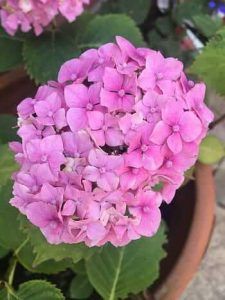 A Hydrangea will live at its widest for a long time as long as it does so on acidic soil, with a pH that ranges between 5.5 to 6.5 that retains moisture very well.
A Hydrangea will live at its widest for a long time as long as it does so on acidic soil, with a pH that ranges between 5.5 to 6.5 that retains moisture very well.
A very curious fact is that depending on this indicator we will have more blue or white flowers, in spring, its time of splendor.
For example, if the pH is maintained around 4.5 or 5, bluish flowers of striking intensity will prevail. But if the pH is higher and is close to 6.5, then pink flowers will abound.
The land must have a superior quality of fertilization, consisting of a contribution of fertilizer made from components of organic matter, in order to guarantee the greatest nutritional contribution.
Another useful tip is to look for fertilizers capable of balancing the alkalinity of the soil, such as ammonium nitrate, ammonium sulfate or potassium sulfate, in the specialized store. This also applies to its care in a pot, which must have a soil with similar characteristics.
For this reason, expert gardeners also recommend adding products rich in sulfur to the soil, precisely to lower its alkalinity.
Bibliography and references
- Bent, Edward; Columbus, Aldo. (2018). the hydrangeas Cultivation and care. From Vecchi Editions. Barcelona, Spain.
- Maier, Hans-Peter. (2008). The multiplication of plants. European Hispanic Publisher. Barcelona, Spain.
- Romero Solano, Miguel Angel. (2017). Evaluation of different substrates to grow hydrangeas (Hydrangea macrophylla Tumb). Equator Technological University. Santo Domingo de los Tsachilas, Ecuador. Reproduced from: http://192.188.51.77/bitstream/123456789/20043/1/9545_1.MIGUEL%20ROMERO.pdf
- Anaya Covarrubias, Julio Yesua. (2014). Molecular pattern of color variation of sepals in hydrangeas (Hydrangea macrophylla (Thunb.) Ser.) under treatment with different pH levels. University of Guadalajara. Jalisco Mexico. Reproduced from: http://repositorio.cucba.udg.mx:8080/xmlui/bitstream/handle/123456789/5741/Anaya_Covarrubias_Julio_Yesua.pdf?sequence=1

![Photo of Complete Guide on How to Plant Carnations [Step by Step + Images]](https://www.complete-gardening.com/wp-content/uploads/2022/08/complete-guide-on-how-to-plant-carnations-step-by-step-images-390x220.jpg)
![Photo of Types of Cucumber: [Characteristics, Best Variety and Difference with Zucchini]](https://www.complete-gardening.com/wp-content/uploads/2022/08/types-of-cucumber-characteristics-best-variety-and-difference-with-zucchini-390x220.jpg)
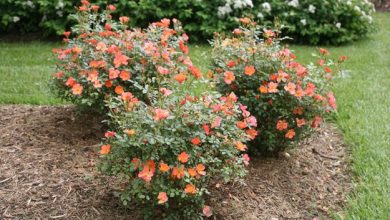
![Photo of Boletus Edulis: [Characteristics, Cultivation, Harvesting]](https://www.complete-gardening.com/wp-content/uploads/2021/06/boletus_edulis_1601461386-390x220.jpg)